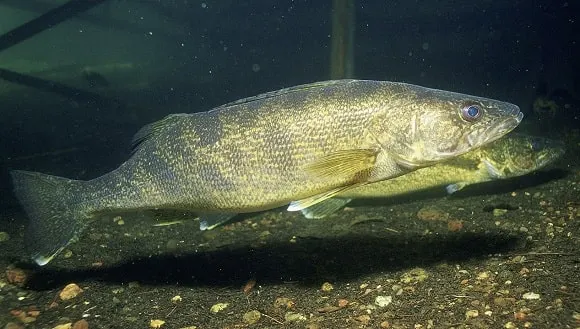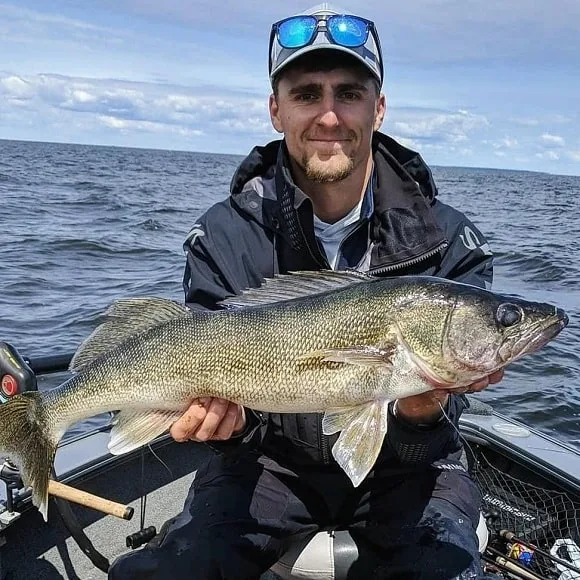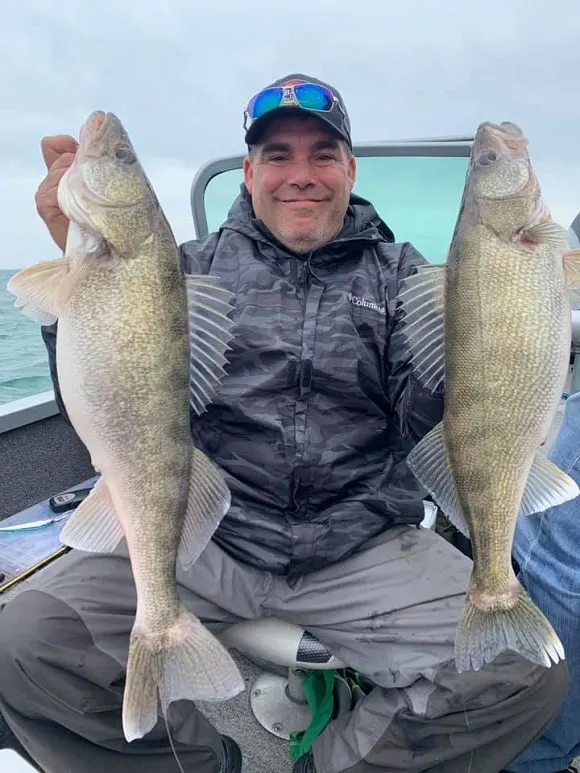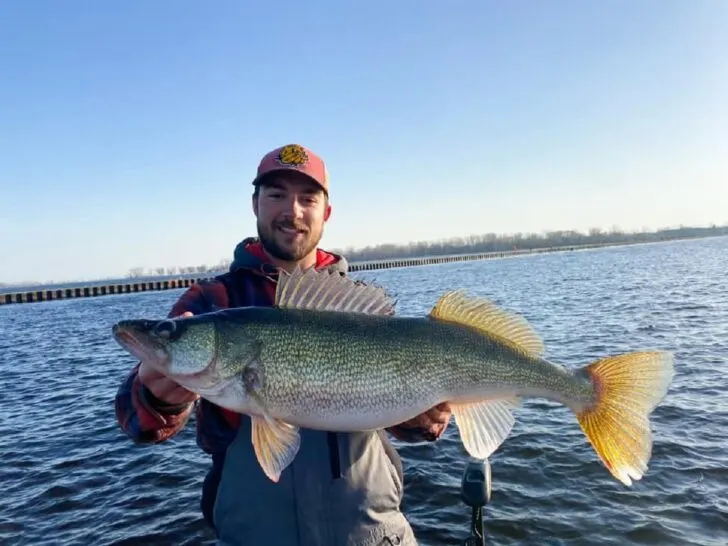Featured image courtesy of Logan Peterson
The walleye, known scientifically as Sander vitreus, is not only one of North America’s most popular game fish but also a very important apex predator for ecosystems in lakes and rivers.
Walleyes are abundant and thriving in many waters across the continent, but as winters become both shorter and warmer, this spring-spawning fish appears to be struggling.
A recent comprehensive study published in Limnology and Oceanography Letters casts a worrying shadow over the future of this awesome fish, unveiling the increasingly precarious position walleye populations find themselves in due to climate change.
At the heart of the issue is a phenomenon known as phenological shift—basically, the timing of biological events like spawning.
The study reveals that walleye spawning is lagging behind the ice-off dates in north-temperate lakes, a problem that is growing as the climate warms.
Historically, the melting of lake ice and the subsequent spawning of walleye were tightly synchronized events.

However, data from 194 Midwest US lakes now show that ice is melting approximately three times faster than the walleye’s spawning cycle is advancing.
This decoupling could lead to significant trophic mismatches, where the peak availability of food for juvenile walleye no longer aligns with their birth, potentially reducing growth and overall survival rates.
“Concerning spring-spawning fresh-waterfish like walleye, early and variable ice-off occurences may alter the timing of the temporally limited peak abundance of appropriately-sized prey for larvae.”
As the winter season becomes shorter and shorter and more unpredictable, the walleyes simply do not have enough time to adapt to the more rapidly changing environment and climate.

The implications of these findings are far-reaching. Walleye are more than just a sport fish; they are integral to the ecosystems of many lakes in the northern US and Canada.
The study incorporates traditional ecological knowledge, noting the importance of the observed decreases in ice thickness as part of the broader narrative of climate change impacts on the walleye.
The findings underscore the complexity of climate change’s impacts on freshwater ecosystems and the challenges of managing fish populations in the face of increasing variability and extreme weather events.

What makes this situation particularly dire is the walleye’s economic and recreational value. The fishery supports numerous local economies and is a key draw for tourism on many lakes.
Declines in natural walleye recruitment could not only threaten the species’ survival but also the livelihoods of businesses dependent on walleye fishing.
The study calls for urgent action to mitigate the effects of climate change on walleye populations. This includes exploring adaptive management strategies that can help sustain walleye fisheries, such as adjusting stocking practices and enhancing habitat resilience.
READ ON: Want to read the entire study and all of its findings? You can find it here.
So, What Can Be Done?
Addressing the challenges faced by walleye populations due to climate change involves innovative and adaptive management strategies. Here are examples of how adjusting stocking practices and enhancing habitat resilience can help sustain walleye fisheries:
Adjusting Stocking Practices
One adaptive management strategy for walleye stocking involves careful consideration of genetic diversity and local adaptation.
This strategy would entail selecting broodstock or hatchery strains that are genetically adapted to warmer water temperatures or have shown resilience to the phenological shifts caused by climate change.
By using genetically diverse and climate-resilient walleye strains for stocking, fisheries managers can help ensure that stocked walleye are better equipped to survive and reproduce in changing environmental conditions.
This approach not only aims to sustain walleye populations but also helps preserve the genetic diversity necessary for long-term adaptability.
Enhancing Habitat Resilience
To enhance habitat resilience, fisheries managers can focus on creating or restoring natural spawning habitats that are crucial for walleye reproduction.
This could involve the construction of spawning reefs or beds in areas where natural substrates have been lost due to sedimentation or other anthropogenic impacts.
Additionally, restoring wetland areas adjacent to lakes can improve water quality and provide critical nursery habitats for juvenile walleye.
These efforts can help ensure that walleye have access to suitable spawning and nursery habitats, which is essential for their survival and the overall productivity of the fishery.
Enhanced habitat resilience also benefits the broader lake ecosystem, supporting a diversity of species and improving ecosystem health.
Both of these strategies—adjusting stocking practices with a focus on genetic diversity and enhancing habitat resilience through habitat restoration—represent proactive steps toward sustaining walleye fisheries in the face of climate change.
By implementing these adaptive management practices, fisheries managers can work to mitigate the impacts of environmental changes on walleye populations, ensuring the continued enjoyment and economic benefits of walleye fishing for future generations.
The plight of the walleye in the face of climate change is a clarion call for concerted efforts to safeguard our natural heritage.
As anglers, conservationists, and policymakers grapple with these challenges, the story of the walleye serves as a poignant reminder of the fragile interdependence between human activities, climate change, and the health of aquatic ecosystems.


check the hatch rates for Lake Erie??? No problem here